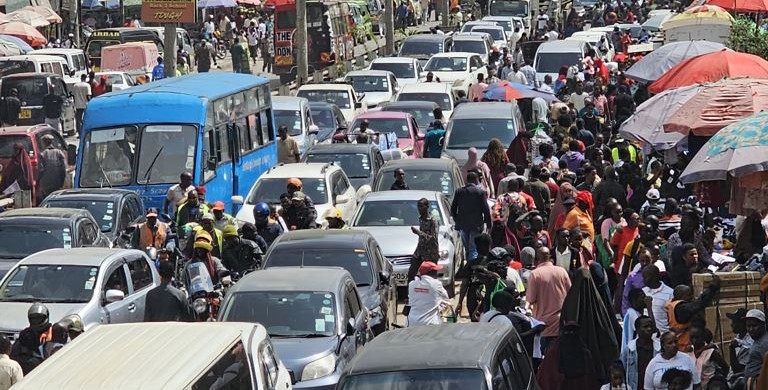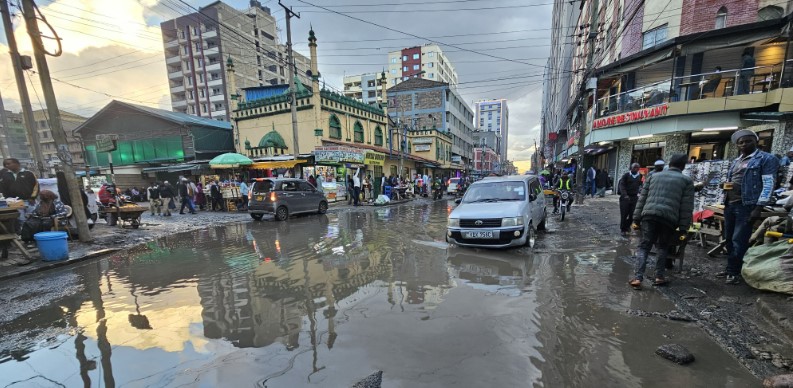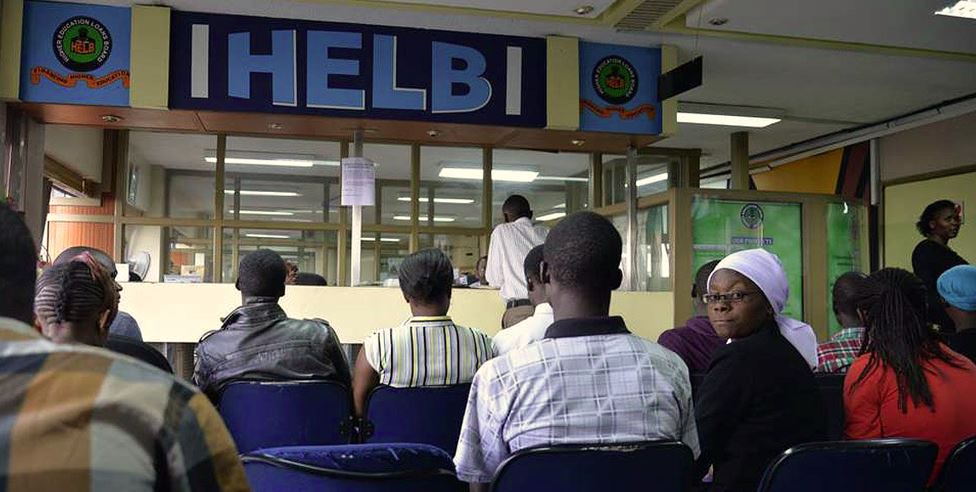Broken promises and bottlenecks: Eastleigh traders choke under congestion, crumbling roads

In March this year, President William Ruto promised to, within two to three months, rehabilitate the road along Second Avenue, a crucial route leading to Eastleigh's bustling market.
For many people, the thought of visiting the Eastleigh neighbourhood means navigating through deteriorating road conditions and chronic human and traffic congestion that would rather be avoided.
Over the years, there have been efforts to ease the congestion, but the situation largely remains the same.
More To Read
- Tarmacking of 18th Street in Eastleigh South begins, completion expected next week
- Eastleigh residents slam City Hall over shoddy repairs on Athumani Kipanga Street, demand permanent fix
- Eastleigh traders urge City Hall to address street vendor clashes, poor roads, waste crisis
- From stalls to screens: Eastleigh traders power quiet digital revolution through social media
- From humble beginnings: Sadiq Gabow carves niche as Eastleigh's sole full-time Marikiti trader
- Eastleigh local traders raise alarm over influx of Chinese retailers
In March this year, President William Ruto promised to, within two to three months, rehabilitate the road along Second Avenue, a crucial route leading to Eastleigh's bustling market, assuring traders and motorists that the roadworks would ease congestion and improve accessibility.
"Hiyo maneno ya Second Avenue; hiyo barabara mnasema imeharibika basi nimeskia. Mnipatie nafasi ya miezi miwili mitatu nitakuja kunyorosha ndio tuweze kujenga iwe ni mahali pazuri. (I have heard your plea on Second Avenue, whose road you have said has deteriorated. Allow me two to three months; we shall work and improve it)," the president said.
The road is yet to be repaired, and the issue of human congestion that has in the past seen Nairobi City County staff engage hawkers in running battles as they move them from pavements to clear congestion along the streets still persists.
The hawkers somehow still get back to the mall's pavements and walkways, forcing traders to devise ways of surviving the status quo, albeit at a price.
Peak shopping months
The situation is best observed in the peak shopping months of October, November and December when most Kenyans visit the neighbourhood for their annual festivities shopping, as well as during April and August school holidays.
"Then, cars change routes and opt to use shortcuts to navigate across one end of the street to another. At the moment, business is down, there are just a few customers," says Esther Gitau, a bridal shop owner on 12th Street.
While May is not considered a peak season, the population of Eastleigh alone and people coming to shop to replenish their food supplies remain high, meaning prior planning is needed to navigate some of the congested streets with ease.
This explains why today, around 10 am, most malls were open but the main streets were recording less congestion. At the time, most hawkers were yet to display wares along 12th Street, giving motorists an easy time.
"This is the best time to shop, before the afternoon when you see people increase in the streets and malls. I like it because it’s less chaotic now," Sally Onyango, a shopper, says.
A section of the locals and traders that The Eastleigh Voice reached out to revealed how they have resorted to adjusting their schedules and commute patterns to navigate their way in and out with some ease.
 Raw sewage flows along Eastleigh’s Second Avenue, making movement difficult both for human and vehicular traffic. (Photo: Abdirahman Khalif)
Raw sewage flows along Eastleigh’s Second Avenue, making movement difficult both for human and vehicular traffic. (Photo: Abdirahman Khalif)
Traffic congestion
They said that for a long time, traffic congestion and the poor state of some of the connecting roads have not only hindered daily commutes but also have significant economic implications for businesses and residents alike.
Gitau says she has worked out a schedule that allows her to get to her tailoring work mid-morning at the Mega Shopping Mall.
"I'm usually late to open, I'm not sure if it affects customers. But I have seen customers kept waiting for a long time due to traffic on the streets. There is also the delay we suffer while waiting on supplies to be delivered due to the time taken in traffic, which forces us to work out time backwards. December gets trickier because it is like everybody comes to shop then," she says.
For matatu drivers, one has to formulate a schedule that works for them to avoid wasting fuel in traffic during morning and evening peak hours.
"I make 10 to 12 one round trips each day, mostly ferrying passengers to Eastleigh in the morning from town and in the evening back to town when most are heading home and traffic to Eastleigh is minimal," says David Moturi.
He, however, notes that the number of trips is dependent on an individual driver, as some sleep in the matatus during the day and others work in shifts.
"So, it's hard to really get a common figure of the average trips matatus make on a day," he explained.
A female Muslim clothes vendor who opted to remain anonymous said the human traffic gets worse during peak seasons, which are usually the last quarter of the year, starting from October to December, when people shopping in Eastleigh increase, leading to congestion along the roads and streets.
With most malls opening around 7 am as owners live within Eastleigh, she says by 8 am most shops usually start to open, and she arrives at 9 am.
Stiff competition
"At times, you find that a customer will call you to inform you that they will come to make a purchase, but the trouble of having to navigate through human and vehicular traffic makes them opt for shops that are close to the main road to save on time. This leads to stiff competition and loss of clients. It's painful," she says.
She adds, "It is even more annoying when you remember you had to leave the house early to get to the shop by 9 am to make more sales. When the clients shop elsewhere, you not only lose on money but also the time that you would have spent attending to a certain chore in the house. It's a tough balance, but we manage."
The traffic has also seen them lose impatient clients, who are unwilling to wait a bit longer to let the shop attendant fetch items from their stores.
"In such instances, you find that the customer is unwilling to wait for you to pick the item from the store because of the chaos. That way, they end up buying what you have in store at the neighbour's shop. You want the money, but they want the item that you have, but it is taking long to get here, so both of you lose," she says.
She says the situation could improve with better planning that accommodates the rising population.
Top Stories Today











































